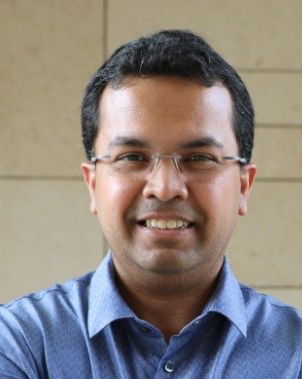Short Course D

MUHAMMAD MUSTAFA HUSSAIN, KAUST, Saudi Arabia
Title: Designing Fully Flexible Interactive Electronic System for Wearable and Implantable Applications
Abstract: For the last sixty years, miniaturization of electronics fabricated on prominent active electronic materials like silicon, germanium, III-V materials and gallium nitride has enabled modernization of today's world - specially bringing convenience, safety and efficiency in our daily life. However, we are in continuous pursuit to find out alternative materials and process technologies to lower the cost of manufacturing and to increase functionalities of electronics. A radical physical change of from rigid electronic components and systems to a mechanically compliant, flexible and stretchable version will jettison the interfacial architectural mismatch with nearly all natural lives, enhance the functionalities of existing applications and will usher into new applications, which are not possible today. In this short course, the following key areas of this emerging area of electronics will be discussed - a. Materials, b. Design and mechanics, c. Integration strategies, d. Applications and e. Future Outlook.
Biography: Dr. Muhammad Mustafa Hussain (PhD, ECE, UT Austin, Dec 2005) is a Professor of Electrical Engineering, KAUST. He was Program Manager in SEMATECH (2008-2009) and Process Integration Lead for 22 nm node FinFET CMOS in Texas Instruments (2006-2008). His research is focused on futuristic electronics which has received support from US Defense Research (DARPA), Boeing, Lockheed Martin, GSK-Novartis, Saudi ARAMCO and SABIC. He has authored 300+ research papers and patents. His students are serving as faculty in KFUPM, KAU, Jeddah University and as researchers in MIT, Caltech, UC Berkeley, Harvard, UCLA, TSMC, and DOW Chemicals. He is a Fellow of American Physical Society and Institute of Physics, a distinguished lecturer of IEEE Electron Devices Society, and an Editor of IEEE T-ED. Scientific American has listed his research as one of the Top 10 World Changing Ideas of 2014. Applied Physics Letters selected his paper as one of the Top Feature Articles of 2015. He and his students have received 41 research awards including IEEE Outstanding Individual Achievement Award 2016, Outstanding Young Texas Exes Award 2015 DOW Chemical Sustainability Challenge Award 2012, etc. His research has been highlighted extensively in international media like in Washington Post, Wall Street Journal (WSJ), IEEE Spectrum, etc.